Japanese performance machinery have seen somewhat of a resurgence of late, as enthusiasts look wistfully at the golden age of sports cars from the Land of the Rising Sun. The 1990s were an especially good time for those who appreciated the unique way the Far East island nation approached the subject of automotive performance, even as the bubble that took its economy to stratospheric heights in the ’80s collapsed.
Of course, evocative names like Skyline GT-R, Supra, Impreza WRX and Lancer Evolution were the stuff of boyhood dreams back then, and these cars remain as desirable as they were then, if not even more so. But none of these have had a fabled backstory and a list of technological achievements quite like the only Japanese supercar to take on Ferrari at its own game – the Honda NSX.
The story of this mythical machine began in 1984, when Honda tapped the design and engineering prowess of Pininfarina to create a mid-engined, two-seater sports car. Dubbed the HP-X (Honda Pininfarina eXperimental), the prototype was a futuristic space pod of a car, with a wedged-shaped body, a glass cockpit and a 2.0 litre C20A V6 designed for Formula 2 racing.
Any other mainstream carmaker would have said that would be the end of that, but Honda’s bosses pushed on with the sports car project, as a means to bridge its mainstream models with its Formula One efforts – as well as to provide the then-nascent Acura luxury brand with a halo model.
The brief set out was for a sports car that would better an equivalent Ferrari (a 328, later a 348) in every measure, but would also be cheaper and more reliable. All that, without compromising on cabin space or comfort – Honda’s prime objective in building cars and motorcycles was to ensure the comfort of drivers and passengers alike, and it wanted the driver to operate the machine as desired over various road conditions.
Executive chief engineer and large project leader (LPL) Shigeru Uehara was inspired by the 360-degree visibility of the F-16 fighter jet’s cockpit, and pursued a cab-forward design to give the car increased visibility over the front of the car, with a long tail improving high-speed stability. This design gave the car its distinctive lithe look, with unmistakably lanky proportions and a blacked-out roof for a canopy-like aesthetic.
The construction of the car was even more extraordinary. Initially, engineers considered building the car out of steel, but found that its weight would’ve necessitated the use of a larger, heavier engine to hit performance targets, and the jettisoning of the creature comforts the team wanted to incorporate – power windows, automatic air conditioning, traction control and ABS – in pursuit of superior handling.
As such, it was decided that the car would be built out of aluminium. That’s fairly common practice among supercar manufacturers today, but in the mid ’80s it was virtually unheard of. Despite being significantly lighter than steel, it is also less stiff, requiring the use of more material to get the same strength; it is also more expensive and more difficult to mould and weld.
Aluminium suppliers balked at the idea at first, but engineers worked with different extrusion methods, the application of various aluminium grades and thicknesses around the body and a Cray II supercomputer for modelling and stress analyses to make it happen. The result was the world’s first all-aluminium monocoque, dropping 140 kg in body weight and nearly 200 kg for the entire car compared to a steel equivalent.
The challenge of building an all-aluminium sports car meant that a new factory had to be built in Tochigi just for it. Because aluminium sheets were thicker than steel, they needed more current to be welded, requiring a specially-designed spot-welding machine. A 360-degree rotary welding table was also installed so that the operator would be able to work on the car comfortably without having to crawl underneath.
With production limited to just 25 units a day, each car would be handcrafted, with aluminium materials given manual finishing throughout. The car was also given a unique four-coat, 23-step waterborne painting process, with the various metals coated to prevent galvanic corrosion.
Under the skin was an all-round double wishbone suspension setup, with front and rear arms also made from aluminium to reduce weight. The alloy wheels the car rolled on measured just 15 inches in diameter in front (16’s at the rear) to lower the bonnet line and reduce footwell intrusion. Steering was unassisted on manual models (automatic models came with power steering) and the brakes featured four-channel ABS.
The engine grew to provide the performance needed to challenge Ferrari. The all-aluminium C30A 3.0 litre naturally-aspirated DOHC V6 featured Honda’s then-new VTEC variable valve timing and lift system, enabling the engine to produce more power at the top end while retaining low-end tractability. There was also a Variable Volume Induction System (VVIS) to force more air into the engine at higher revs.
Also fitted were titanium connecting rods, another first for a production vehicle, enabling the engine to spin at up to a screaming 8,000 rpm. All in all, the transverse, 90-degree V6 produced 270 hp at 7,100 rpm – a staggering 90 hp per litre – and 285 Nm of torque at 5,300 rpm. Standard-fit was a five-speed manual gearbox; a four-speed automatic was also offered, paired to a detuned 252 hp engine.
Honda conducted early testing at its Suzuka Circuit, and in 1989, Ayrton Senna – fresh from winning the Formula One driver’s championship the year before – was asked to drive the car. The Brazilian’s comments were damning. “I’m not sure I can really give you appropriate advice on a mass-production car, but I feel it’s a little fragile,” he said, referring to the aluminium body’s apparent lack of rigidity.
In response, the development team packed their bags and headed to the famed Nordschleife track at the Nürburgring to find structural weaknesses that were not detected back home. The car pounded the track for months, and the test data was fed back to the research and development centre in Japan to optimise the car’s design in pursuit of maximum rigidity. The finished body ended up being 50% stiffer than before.
Meanwhile, the Chicago Auto Show that year saw the unveiling of a svelte bright red prototype, carrying the now famous codename NS-X (New Sportscar eXperimental). Honda incorporated the lessons it learnt at the Nürburgring into the final production car, and with the dash in the name dropped, the NSX went on sale in Japan in September 1990.
This incredible development story and world-beating design and engineering meant that the NSX, which never sold well in the first place, is now highly sought after, with prices well into six figures. The car seen here is a 1990 manual – the 536th unit to leave the Tochigi plant, in fact, according to the numbered plaque on the side sill – carrying the model code NA1, and apart from a few choice modifications, is pretty much stock.
Those additions include an induction box and a titanium catback exhaust from ARC, along with Bilstein dampers, red-painted cylinder head covers and larger ADVAN Racing RZ wheels that were already installed when the car arrived from Japan. The owner said that the front tyres – which measure 205/45R16 – are the maximum width allowed in the tight wheel arches; any wider and they’ll rub against suspension components.
As mentioned, pretty much everything else is in original condition; the paint looks immaculate, and aside from a few scrapes on the chin spoiler, so does the bodywork. The interior, while certainly dated-looking with its ruched leather upholstery, is remarkably clean as well, and it’s genuinely amazing to see items like powered seats, automatic air-conditioning and a driver’s airbag on a 27-year-old car.
With an all-new NSX now in production, nearly 12 years since the last of the first-generation rolled off the assembly line, where does the revolutionary original stand? It’s actually very easy to consider it a failure in more ways than one – for all the technology hidden within, it never really hit sales targets of 6,000 units a year, and throughout its lifetime enthusiasts never saw it in the same light as a Ferrari or Porsche.
Honda persisted with the idea for a number of years, introducing a lightweight Type R variant in 1992 (a second one was offered in 2002), moving to a larger 3.2 litre engine in 1997 and giving the car a makeover in 2001. But it was soon clear that it did not have a motivation to develop next-generation models, and the NSX was discontinued in 2005 after 15 years in production. To give you a sense of perspective, Ferrari went from the 348 to the F355, 360 Modena and F430 before the Honda was withdrawn from sale.
But away from the sales figures, the NSX showed the world a different side of Honda that a select few petrolheads already knew – that the house that Soichiro built wasn’t just a by-the-numbers Japanese carmaker churning out Civics and Accords until the end of time. Soichiro Honda was one of the world’s most brilliant engineers, don’t forget, and his spirit of innovation still shines through in his company today.
Nowhere was this more evident than in the Honda NSX, which demonstrated that a fast car and a comfortable, reliable one were not mutually exclusive. It proved that the Japanese could do more than just build silly-fast four-wheel drive road weapons, but a machine with the level of attention to detail that could rival anything from Italy or Germany. And in quintessential Honda fashion, it showed that with the right skills, resources and determination, anyone can build a legend, no matter what the naysayers will say.
Looking to sell your car? Sell it with Carro.


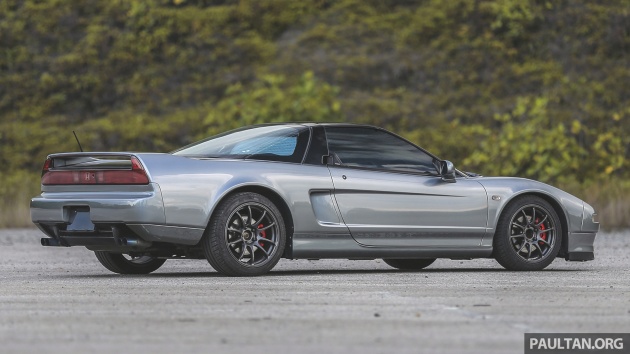
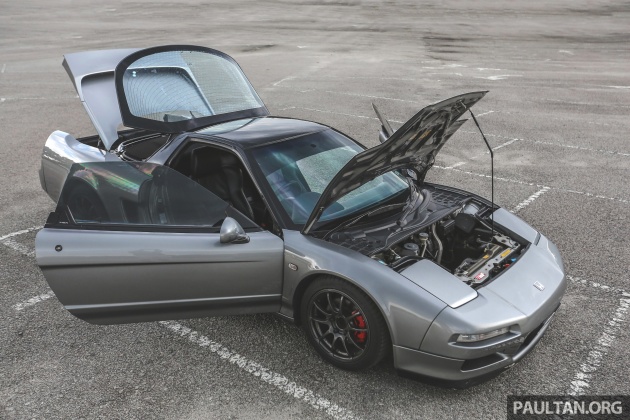


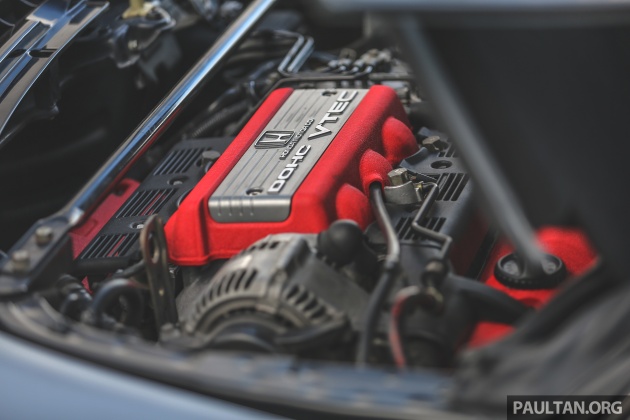



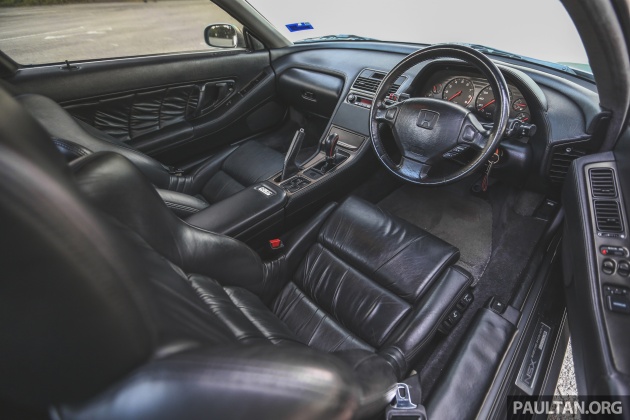
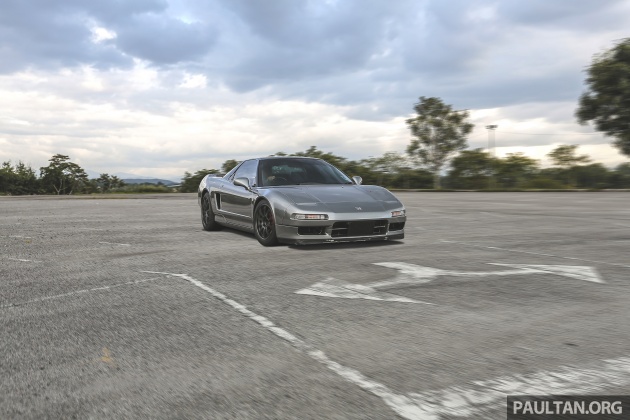
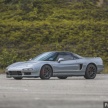
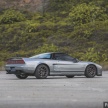
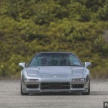
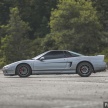
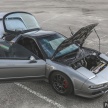
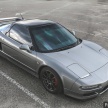
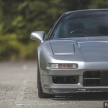
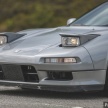

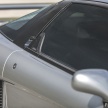
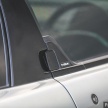
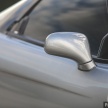
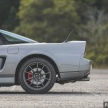
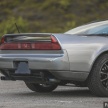
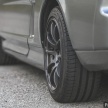
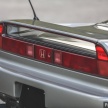
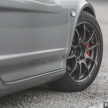

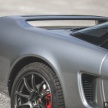

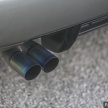
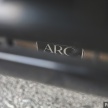
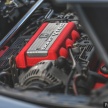
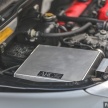
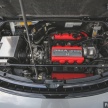
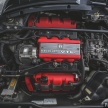
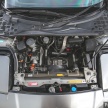

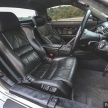
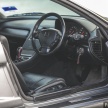


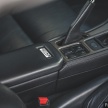
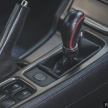
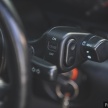
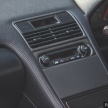
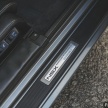
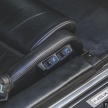

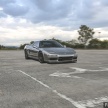


















Awesome looking car!!!
I remember, in 1990, this car was pretty affordable to Malaysians. About RM200k then.
How things have changed. Now, just caplang Camry is already near RM200k.
Back then, 200k can buy a bungalow. How affordable was that?
no such thing. Terrace house was already RM200k then. Where got Bungalow RM200k in 1990?
Bro. U din live long enuff to know what early 90s were like.
My parent bought a bungalow @rm280k gombak area in 1989..
Back then, USD1 = RM2.50. We were one of the emerging market economic tigers. We were bold to build KLCC Twin Towers & KLIA. Now, we’re but a shadow of ourselves.
Becoz of that, we were spending money that we dun have like nobodys business.
We were accumulating debts that we are still paying after almost 30 years.
We cannot and shud not continue have like that. Thats going down path of Venezuela, Brazil or Argentina.
I remember the Honda Legend (which like the NSX still looks timeless now) was sold here by Kah Motors in the early to mid 90s for close to RM200k. Not sure if the NSX was officially sold here by them as well. Perhaps through grey import.
Those of you who find it good looking really need urgent eyes check. Fugly like hell, the proportion so sucks!
KYS
that shows you are not from the late 80’s and early 90’s era. For the rest of us, we admire the NSX, some of us even have its posters on our walls when we were young then.
I have this poster of the NSX framed up, together with the Testarossa. Its somewhere in my house which I need to dig it up. Haha.
Honda…cars for the masses
Why featuring old unker car? We need the new NSX Hybrid article here…
We’ve already driven that one, and you can read it here.
If you are a real petrolhead you will love this car and its tech. I appreciate that this articlenis written. I think NSX is still pretty. I am looking dor one….but the price just keep hoing up!
well, got people like to appreciate old junks maaa….Paultan.org writes for them lorrr
Old piece of junk….there is one lying somewhere around in Puchong abandoned
You sir know nothing about masterpiece.
May I know what car are you driving ?
Unfortunately, nowadays the supercar game has move on and the latest NSX doesn’t have much edge in terms of handling & engine performance compared to the European rivals. Back in early 1990s, the original NSX stunned the world when it outperform the Ferrari 348 & Porsche 911, but then gradually lost the momentum, which of course happened when Honda realized they don’t the brand did’nt have that supercar image and thus the low-sales figure. But nowadays it could be a different story..
Supercar buyers are just like any fanboys, albeit well heeled, too often looking at brand and numbers instead of actually getting intimate with it.
What makes a good sporting car is not how fast it goes, not how well it churns out time sheets at the ‘ring, but shines in an aspect that few appreciate nowadays.
FEEL.
A car that communicates. A car that allows you to dance around corners and to wring every last bit of grip from the tires because it tells you exactly how much it can give you.
Call me a Luddite, but this, and the early Miatas were the essence of this sorely missing feature of modern sporting cars, unfortunately subdued by fat sticky tyres, technological driving aids, and by layers of annoying safety nets.
Perhaps the 86 and the new miata would be the silver lining. Many, as would I, would likely wish that the new NSX would be half the price and half the complexity and double the “feel”.
If there was any complaint about the old NSX (I had some time with a late model 3.2L) was it was too quiet and refined, a little too much Accord, and a little too little buzzy CRX. Oh and the long rear boot was made to fit golf bags….
If i am not wrong, this exact NSX is on sale for RM300k+
Great write up but I must say that Honda is a shadow of its former self in terms of pushing the envelope..they put profits front and centre and rely on brand name to get by..the same can be said of BMW..i understand they are in the business to make money..but other carmakers like Mazda and Renault have shown that you can still build cars that are exciting, comfortable and practical..even Toyota has appeared to be adventurous of late..
Please take note I’m talking about the mainstream model line up before you start screaming ‘M’ and “TypeR’
Awesome article, the attention to detail in making of this legend is pagani like, if not more, since they had to build the tools and factory to build the car,
On another note
One of the best sounding cars ever made is a 1964-66 honda s600, jay leno rebuild and reviewed it, it a screamer and sounds like nothing else on the road, itll put f1 cars to shame
And to those not knowing, Honda was not the first who invented variable valve timing. The honour went to Alfa Romeo back in the 1960s.
However the execution did not went well as Alfa was lacking things like autoCAD or sophisticated testing lab like in the 80s or today. The result to its testing was horrible, Alfa failed to get more power it desired to use in racing and the engine created excessive vibration.
After 20 years, Honda perfected the concept and quickly patented it. In Japan though Toyota already developed variable valve timing few years earlier than Honda called VVT, later in late 90s improved it further with VVTi. However Honda’s VTEC is smarter and capable to switch from 8 valve to 16 valve according to rev speed.
Your fact from google? Not all correct.
Toyota’s vvt tech is from yamaha la singh…
My dream car..
Back then, it was a quantum leap for Honda to develop a sports car thats even considered on par with Porsche & Ferrari. The legendary Aryton Senna helped with the final development of this NSX. Honda got it right on so many front with this car that till today, it is still seen as revolutionary. Honda set the bar by creating the first Japanese super car. Go YouTube and watch Senna drive the NSX on the (Suzuka?) race track. See how THE best F1 racing driver push the NSX to its limits.
It must be a torture to park this car without power steering on such large wheels.
it quite easy if u have the skill
No wonder this NSX is so familiar. This is the exact car that is now on sale on mudah.my for RM 320k. Correct me if I’m wrong.
yet another brilliant piece frm paultan.org! keep it up.
Proton is the best! Affordable, lots of performance parts, cheap to operate and soo easy to mod kaw-kaw….
Hey, isn’t this the NSX that was in the classifieds recently (might still be there)? A 1990 model, with the very 80s pop up headlights (cos it was designed and developed in the 80s). Which makes it 26 years old. And it still looks in good shape, though I prefer the original rims or the ones that came on the facelift which had the 3.2 engine. Hope you guys managed to drive it. How’s it like driving a 2 decade old supercar?
wow…manual NSX in Malaysia….seen a few units for sale but all automatic and the price they are demanding are crazy….
It’s very unfortunate that Honda decided not to proceed with the HSV 010 GT, a front-mid engine V10 super car that is supposed to be the NSX replacement.
Read every word. Thanks for the great story. Well written and for a moment, it felt like a teacher verbally illustrating the nsx golden age.
Whats with the random 2011+ standard of articles lately? All the writers at paultan suddenly becoming enthuasiastic to churn out awesome articles again? O.o
1990 also spawned Lexus with is Ls400 which stunned the German Marque, and it was toyota reliability compared to the 7 series and the S class back then. 90s were the golden Japanese years and the years that they made the greatest Japanese cars that’s still legendary today. R32,r33,r34 skylines, Silvia, drift family saloons Cressida, Cresta, Chaser mark 2, aristo crown. Vtec powered EF8, EG6,EK4, intergra DB8,DC2R and so much more….. not forgetting Evos and WRXs….
rarely seen 1 on the road in malaysia today…
is better looking than the space-age new nsx…too much technology helping you to drift ^^
It seem that you miss one of the legendary car from Mitsubishi, GTO.
Yep. That was lejen, a Supra with AWD. Made femes by JackieC
Oh year 90s..
There is the legendary Honda Prelude which is cheaper option to have NSX feeling
This was the car that inspired Gordon Murray of how he wants to built the Mclaren F1. Previously, he was looking at Ferrari, Porsche, Lamborghini, etc.